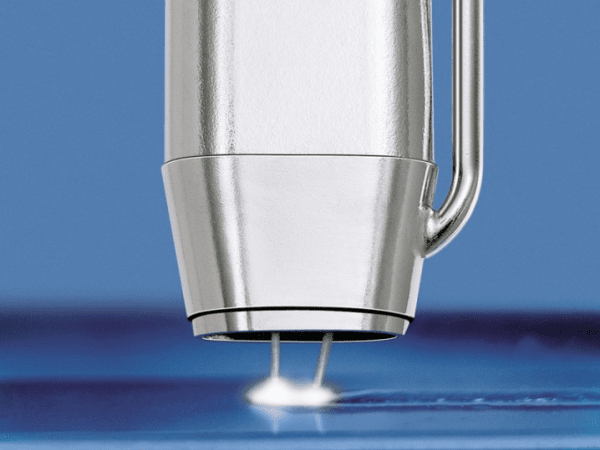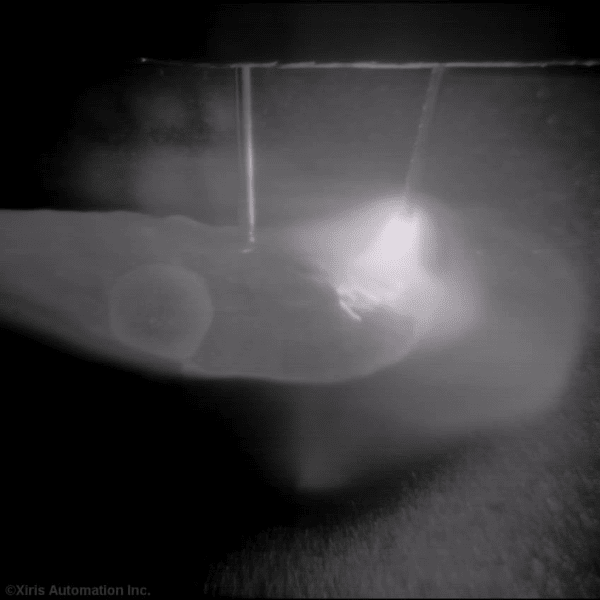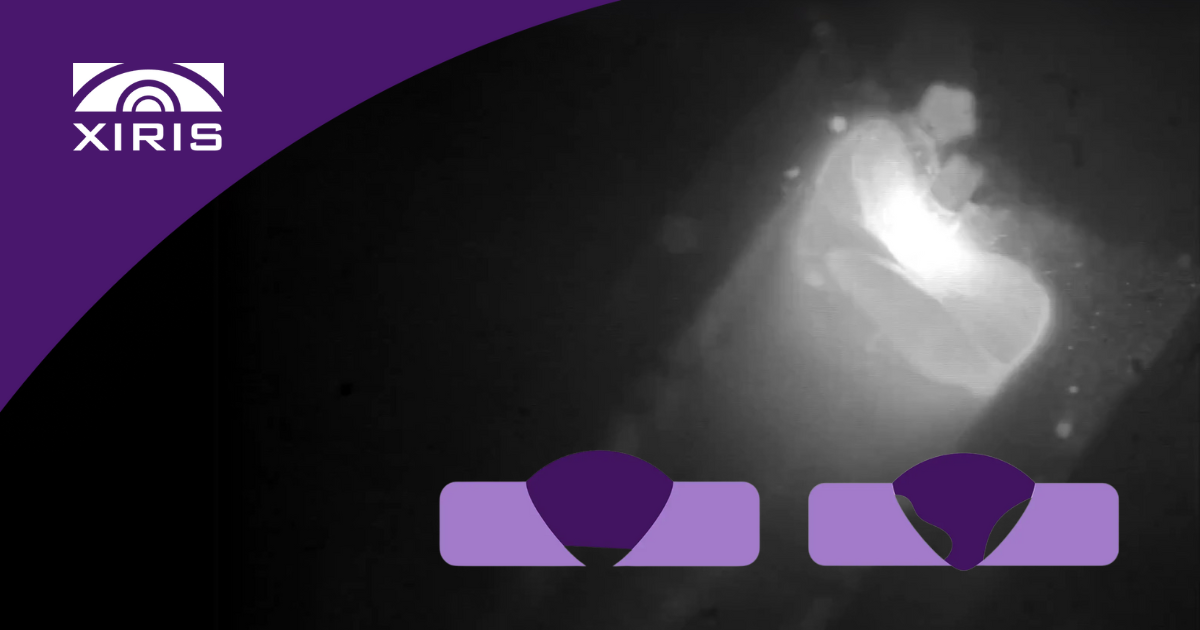Tandem MIG/MAG welding is a beneficial material processing application for many fabricators because it can weld at higher speed with higher deposition rates than traditional single wire MIG/MAG processes, while reducing heat input and improving weld penetration on thicker materials. But it also demands a level of precision that necessitates detailed, real-time monitoring of the weld process.
Advanced Weld Cameras can provide this level of monitoring, allowing fabricators to gain the advantages of the Tandem MIG/MAG process without any sacrifice in productivity or quality. In fact, Weld Cameras with High Dynamic Range imaging can improve output and quality control.
The Tandem (or Twin) MIG/MAG Welding Process
In a Tandem MIG/MAG welding process, two wires are continuously fed through a special welding torch and are consumed to form a single weld puddle. The first or leading wire controls the deposition rate and penetration. The second or trailing wire controls the weld bead appearance. The wires are controlled independently through separate power supplies and/or waveforms to achieve different results.
Typical applications of tandem MIG/MAG welding include automotive, construction, shipbuilding, pressure vessel welding aluminum, steel and other materials. Weld overlays have also been deposited using this technique.

Tandem MIG/MAG Weld Process
(courtesy Fronius AG)
Why use a Weld Camera?
Tandem MIG/MAG welding can only be used for automated welding processes because of the accuracy required in positioning the bulky torch and the limited accessibility for direct viewing of the weld process that it offers. A weld camera is therefore an essential productivity aid to allow operators to monitor the quality of the weld process and its surrounding environment, including:
- Ensuring that the welding torch is suitably rigid and following the seam properly
- Ensure that safe and consistent wire feed does not compromise the high speed advantages of the tandem process
- Ensure that consistent welding conditions are maintained to obtain a smooth weld bead.
- Ensure that a minimum weld pool size is maintained to provide proper wetting of the bead
- Ensure that the power supplies of the two different wires are functioning correctly to create the best quality molten weld pool.
- Monitor the completed weld bead for indications of a good tandem weld process: clean seam surfaces, flush weld toes, and minimal welding spatter
 View of a Tandem MIG Process Using a Xiris Weld Camera
View of a Tandem MIG Process Using a Xiris Weld Camera
Conclusion:
Integrating Weld Cameras into a Tandem MIG/MAG welding process is essential to creating a high-quality, high-speed, state-of-the-art welding cell. Fabricators can gain a competitive advantage by being able to better monitor the high speed welding process, providing better process control. The net result is that they can leverage their investment in a Tandem MIG/MAG process to achieve better results.








